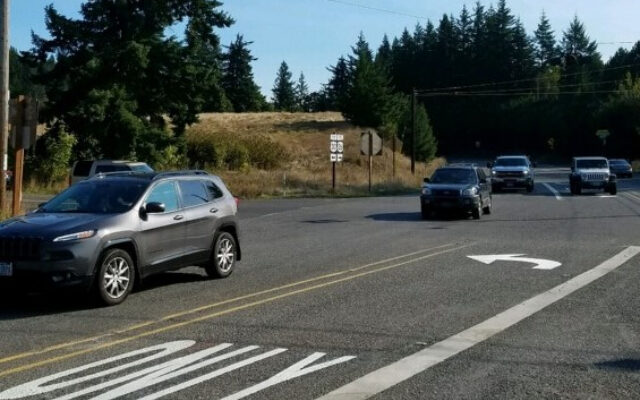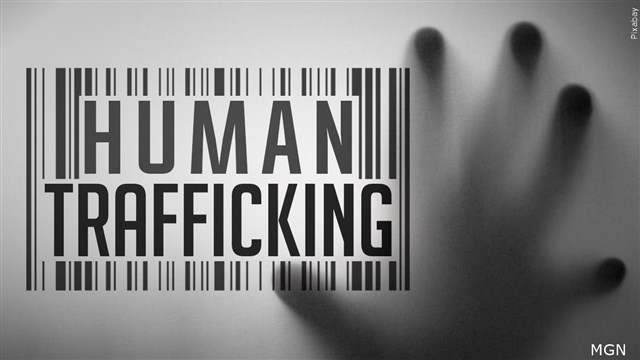New Funding To Make School Zones Safer

Salem, Ore. – Oregon Department of Transportation commissioners approved $32.4 million in grant funding for 26 Safe Route to School Projects. “This is dedicated to things like sidewalks, curb ramps, flashing pedestrian beacons, all kinds of road improvements around schools and around neighborhoods that serve schools,” said Shelley M. Snow, Strategic Communications Coordinator at Oregon Department of Transportation.
The funds come out of the State Highway Fund, the gas tax, and every single one of the awardees are Title 1 schools. Schools where 40% or more of the student population is low-income. Demand for the funds were high, as schools across the state, lack basic things like sidewalks or the proper traffic signage. “The need far out paces the funds we had available. We had 83 applications requesting $80 million in funding,” Snow said. “We confirmed we’d have at least $26 million available, but then thanks to cost saving from the last round, we had extra, so we could get up to more than $32 million.”
Snow says while this time they focused on Title 1 schools, there are a number of factors they weigh in how the funds are distributed. “We the rank projects on a number of factors. The population that’s being served, the safety or danger of the situation, the ability of the project to be completed within five years. There are several factors the committee has decided to use over the years.”
She adds, the state has detailed crash data that tells them exactly how many crashes, or pedestrian incidents there are around a specific school. ODOT only shared statewide data with KXL. Total crashes have fluctuated in the last five years. There was a high of 166 in 2019, an expected dip in 2020, but a pretty big drop from the average in 2021, where there were 107. There have been 2 fatal crashes since 2017. Injuries in school zones have also fluctuated quite a bit with a high of 223 in 2019 and low of 157 in 2021 (not counting the COVID year).
Executive Director of The Street Trust Sarah Iannarone says it was imperative state lawmakers take action, and they did, setting aside funding for the program as a part of a larger transportation funding packaged passed in 2017.
“We are talking about unsafe conditions for a huge majority of our population,” Iannarone said. “There are thousands of Portland Public School students who go to school right along just Powell Blvd. Cleveland High School, Kellogg Middle School, Creston Elementary all in a single stretch.” Powell is known as one of the 30 most dangerous roads in the Portland area and has recently has come under fire to make changes after a Cleveland High student was hit at the intersection of 26th Ave and Powell, and two weeks after the death of famed chef, Sarah Pliner, was hit and killed by a semi-truck.
Five elementary schools across the Portland Metro Region received funding for Safe Routes to School projects. James Templeton Elementary School in Tigard received the most funding. It’ll get $2 million for crossing enhancements, street lighting, sidewalk improvement, curb ramps, school flashers, and school signage. Fairview Elementary School in the Reynolds District is getting $1.9 million for new bike lanes and what’s called an “enhanced crossing for students,” which usually take shape as pedestrian islands or extended curb bulbs. $1.8 million is for Portland’s Powell Butte Elementary to construct sidewalks, crosswalks, and buffered bicycle lanes, which usually come in the form of those green bike boxes. Holcomb Elementary in Oregon City is getting $1.6 million for marked and signed crossings, more lighting, and two rapid flashing beacon warning crossings. Lastly, Witch Hazel Elementary School is getting just under $1 million to construct a new sidewalk and add lighting along a major roadway, as well as to extend a pedestrian only route to school.
“It’s really nice to see so many of our community partners outside the center city of Portland getting long overdue TLC,” Iannarone said in response to who was chosen for funding. “What we’d like to see is increased funding so that every school is as safe as possible. It’s really hard to square the circle on how we can send our kids to school and not make sure the streets around them are completely safe. That’s where we live our lives.”
While these projects may seem like simple changes, these little nudges in infrastructure can be life saving.
“Even things like, where the pedestrian cross signal changes just a little before the red light changes to green so that people trying to cross on foot get a head start before those operating vehicles start taking right and left turns. Things like rapid flash beacons. Yeah, that’s really important. Things like the radar boards that tell people how quickly they’re going through a school zone,” Iannarone said. “All of these things together can create a safer environment. Because at the end of the day what we need is increased awareness.”
While changes are being made to make Cleveland High school following the recent tragedies, Iannarone and The Street Trust are lobbying to allow high schools to qualify for these types of projects. Currently only K-8 can receive funding. She adds, the pandemic could have helped grow public support for these projects.
“We embraced a lot of these open street activities during the pandemic. When we were on lockdown, where did we go? We went out on the streets,” she said. “People want to be out there, and they felt safer because there weren’t as many cars out there. I think these trends are going to continue where people are trying to connect with each and make community in the streets.”



